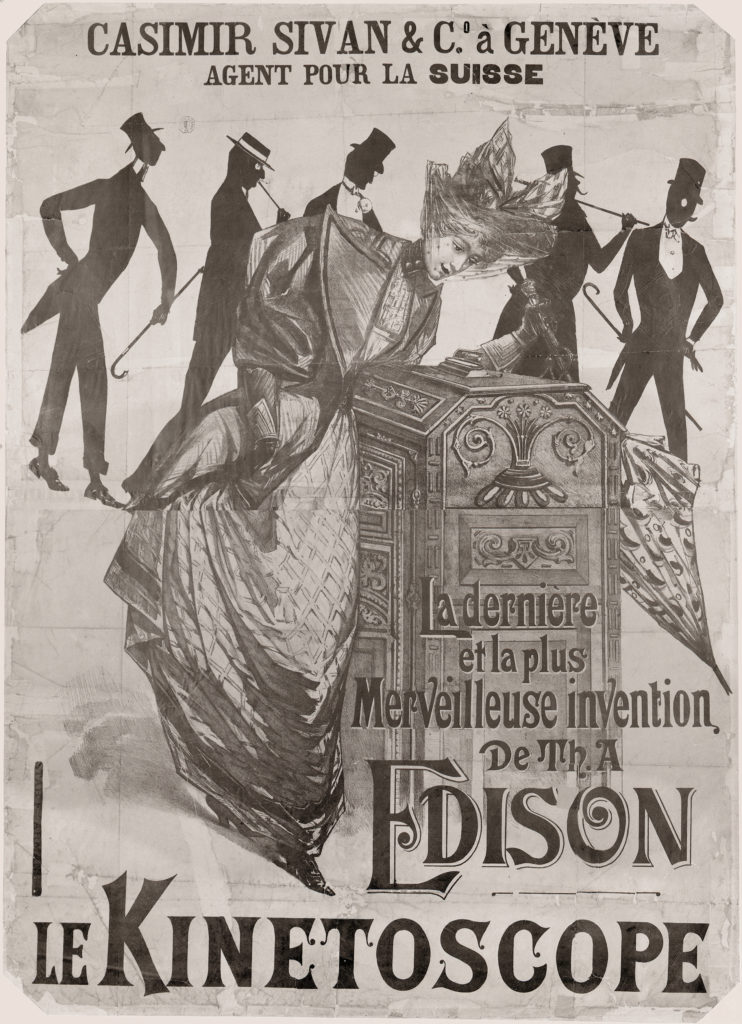Bringing the image to life
American Thomas Alva Edison played a crucial role in the birth of the cinematographic industry. Instrumental in creating the perforated 35 mm film, which then became the standard format for cinema and photography, Edison invented the first commercialized film viewer, the Kinetoscope, patented in 1891.
Having designed the phonograph, a device which recorded and reproduced sounds, Edison was looking for a way to “do for the eye what the phonograph did for the ear”. In 1891 he invented the Kinetoscope, a device which made it possible for a single spectator to view short films lasting about 30 seconds each. At the same time he developed the Kinetograph, a cinematographic camera.
In order to shoot his films, Edison ordered 35 mm format film from Eastman and Blair, half the width of the film used for the Kodak Original. He decided to perforate the film so a cogwheel could turn it. The perforated 35 mm film subsequently became the standard format for cinema, and then later the standard format for photography.


